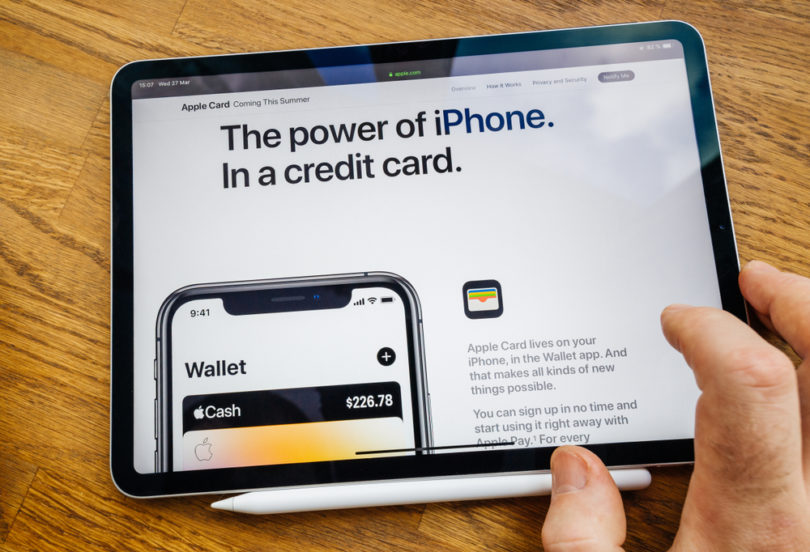Frederick Achom reviews Apple’s new credit card announcement
Apple Pay is now an every day way to pay for goods and services for millions of people. And Apple is set to capitalise on its success and cement its place in the financial sector, with the announcement of its new Apple Card.
Partnered with Mastercard and Goldman Sachs, the Apple Card offers a host of benefits and easy-to-use features that could have Fintech competition deeply worried.
How will the Apple Card work?
The first notable feature of the Apple Card is how simple it is for customers to access it and use it. There is no waiting period to be accepted, no gap between applying and using it to pay, in fact, nothing that could be associated with traditional credit cards.
Some Fintech companies already include simple online sign up for credit cards, but there is always some kind of a delay between applying and using. The Apple Card will be included as a built-in feature of the Apple Wallet on iPhones. All customers need to do is sign up and they are immediately able to use it.
Apple say that the card offers a ‘healthier financial life’ to its customers. As well as 2% cashback on every transaction paid daily, it is designed to help people make smarter financial choices.
All of these features are tried and tested with the millennial generation, who respond to rewards, loyalty offerings and, crucially, easy to use products. This is how Apple is tapping into the zeitgeist to beat Fintech start-ups at their own game.
When will Apple Card be available?
By September 2019, iPhone customers in the US will be free to sign up for an Apple card. As they already tend to have heavy loyalty towards Apple and are used to its first foray into the financial sector with Apple Pay, the transition to their credit card should be seamless.
Apple have simplified the sign-up process, they’ve made it easy and immediately available to use, and they offer all the other benefits associated with credit cards. This includes automatic categorisation of transactions. This is something that is already used a lot in Fintech products, and there is no direct evidence yet to show that it’s beneficial for customers in any meaningful way. However, it is what consumers expect, and it is a trend Apple intends to have a slice of.
Payments will go into separate categories, and Apple will use machine learning to accurately label every payment with the merchant and location of the transaction. This is several steps further than most categorisation offerings in financial products and is likely to strike a chord with Apple’s customer base.
Key features of Apple’s credit card
The idea of taking a trend and improving it is behind other offerings from the Apple Card. Cashback has become extremely popular among Fintech companies as a way of guaranteeing customer loyalty.
Apple Card takes it a step further by offering ‘Daily Cash’ on transactions. This will be 2% of every purchase the customer makes, and they will be able to use that cashback straight away. They can either use it on Apple Pay, send to family and friends in Messages or use it to go towards their Apple Card balance.
Perhaps the most attractive feature of all for customers, the Apple Card will have no fees attached. Apple says there will be “no annual, late, international or over the limit fees…” However, the small print shows that it’s not quite as perfect as it sounds. Late payments will mean extra interest added onto the Apple Card’s balance.
The Apple Card looks set to offer everything other credit cards and products do, but with more finesse, shine and benefit for the customer. Apple already has millions of loyal customers and a vast swathe of consumer data at their fingertips. It seems the appetite is there for the Apple Card, and it’s difficult to imagine that it won’t be a soaring success. All of which will disrupt a sector more used to disrupting the traditional banks.
Editorial credit: Hadrian / Shutterstock.com




